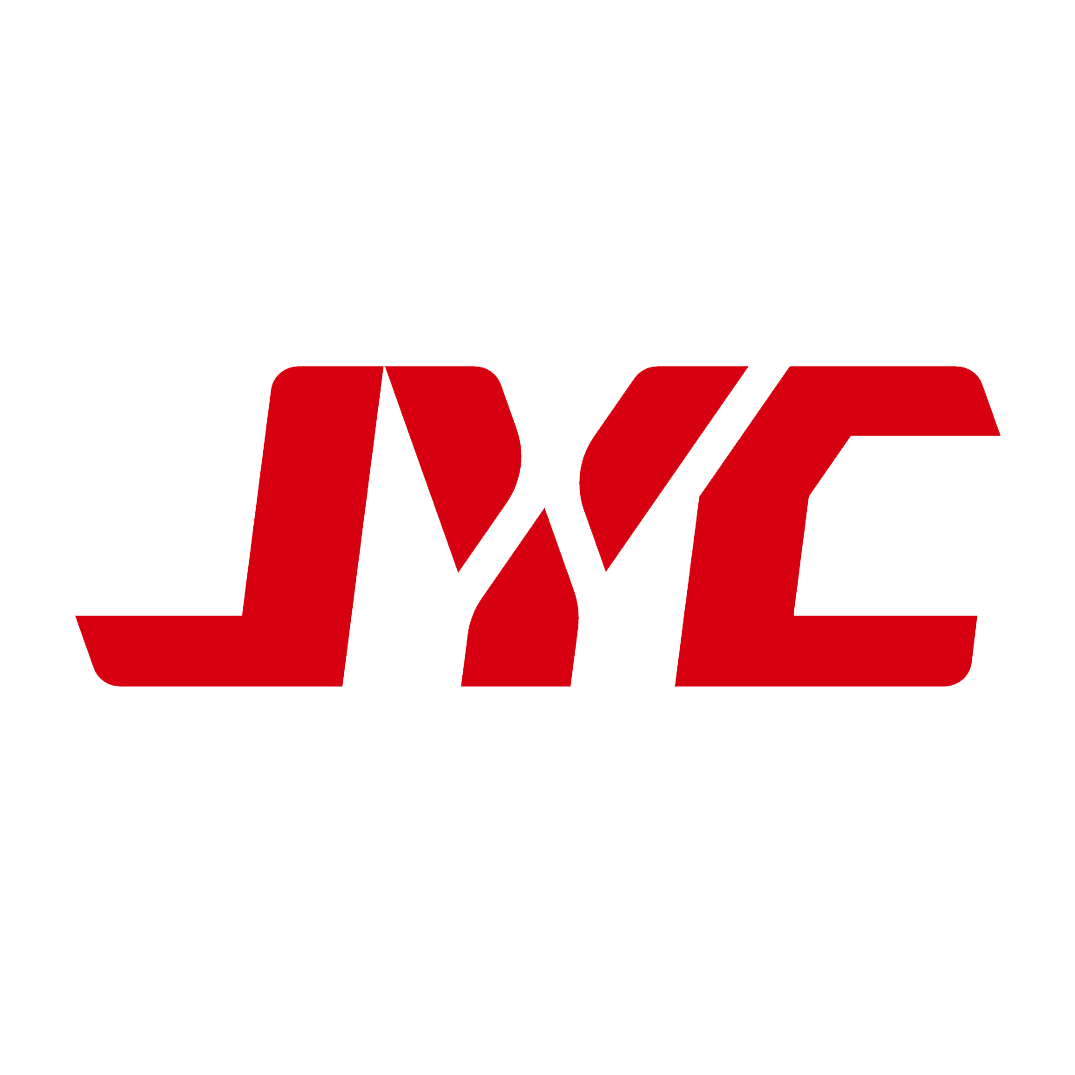
Decipher the detailed process of wood joining
2023-04-14 15:28
Due to the shortage of wood, rising market prices, and the need to reduce after-sales problems, many home furnishing manufacturers adopt the method of panel joining to obtain the large panels required for production, especially for manufacturers that produce relatively expensive hardwood products.
There are many ways to join solid wood boards. In actual production, the appropriate joining method should be selected according to different purposes. When joining wood boards with high hardness, what special attention should be paid?
As we all know, in the process of joining wood boards, to minimize the shrinkage and warping of the finished boards, the width of the solid wood strips should be limited, generally no more than 60mm wide.
In addition to limiting the width of the solid wood strips, the tree species in the same panel combination should be consistent or at least similar in material properties, and the moisture content deviation of adjacent solid wood strips should not exceed 2%.
Next, let's take a deeper look at the different processes of solid wood joining and the more popular intelligent and efficient wood joining equipment on the market.
1. Eight Common Ways of Joining Wood Planks
1.1 Side joining
The joint surfaces of flat solid wood strips should be planed straight, and the joints of adjacent wooden strips should be flat without gaps. It is a relatively efficient solid wood paneling method that adopts adhesive bonding. The processing of raw materials is relatively simple, the production efficiency is high, and the loss rate of raw wood is the lowest. Need to use a professional high-frequency joining machine and other professional equipment, rapid heating to promote glue penetration, and use multi-directional pressure plate to ensure the flatness and stability of the finished board, and avoid unevenness of the finished board to the greatest extent, such as the warping of the raw material of the solid wood strip and so on.

1.2 Joining method of bevel interface
The method of the inclined plane is to change the plane of the glue joint surface of the side joint into an inclined plane, and then adopt a form of solid wood joint by glue pressing. The processing is relatively simple, but the loss rate of solid wood raw materials is high, and it takes more effort to align the solid wood strips during joining, otherwise, it will easily trigger to an extremely uneven surface of the finished board. The advantage of this method is that the bonding strength is improved.
To pursue the stability of the joining, the bonding surface is deliberately processed into a slope that is difficult to align, which greatly increases the difficulty of the joining work. Obviously, it is not necessary, because the market Good quality glues for joining wood boards are plentiful and inexpensive.

1.3 Joining method of high and low interfaces(Half Lap)
The joining method of the high and low joints is a form of solid wood joining in which the sides of the solid wood strips are processed into one high and one low position as the joint before the panel is joined and then glued with adhesive. However, the jointing method needs to process the solid wood strips to form a concave joint of the same size. For example, there is a gap of 1cm wide and 0.5cm high on the edge of the first strip, and a gap of the same height and width on the edge of the second strip, but in the opposite direction. This method has a high loss for processing the solid wood strips used as raw materials, but the joint strength is high, it is more labor-intensive in the glue application process, and it is easy to cause uneven glue application and cause quality problems in the finished product.

1.4 Concave-convex joining(Tongue and Groove)
The concave-convex joining method is a form of solid wood joining that processes a "snappable gap combination" at the junction of solid wood strips before joining, and then uses adhesive to join. The "snappable gap combination" is the junction of two wood boards connected to each other, one of which is processed with a groove, and the width of this concave is just tightened enough to "bite" the protruding wood strips of the other boards. When processing the "gap combination", the loss is high and the joint strength is high, but it is more labor-intensive in the glue application process, and it is easy to cause uneven glue application and cause after-sales problems.
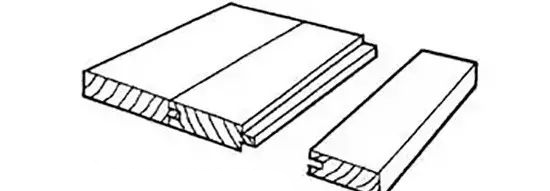
1.5 Tooth-shape joining
Tooth-shaped joining is also called finger-shaped joining, just like joining finger-joint boards, but the difference is that finger-joint boards are “some short boards jointing into a longboard”, and here we are talking about joining small boards into large boards, and the position of the joining of the wooden strips is different.
However, more than two tooth-shapes should be processed at the junction of the solid wood strips before the board is joined. The size and position of the tooth-shapes of the two adjacent boards can just correspond to each other, and then the adhesive is added and then pressed together. Similarly, the method of separately processing the gaps at the joints will cause some loss of wood raw materials, and unskilled workers will cause uneven glue application when applying glue.
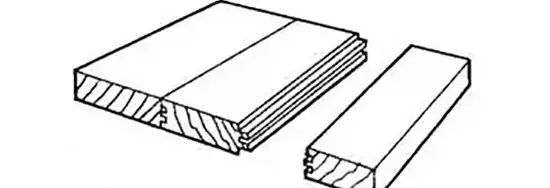
1.6 Insert tenon joining method
This joining method is to process the joints of the solid wood strips flat and smooth (similar to flat joining) , before the planks are joined together, make a mortise in the middle of the wood strips, apply adhesive on the joint surface, and put corresponding to the shape of the wooden tenon, and then pressing the planks together, it is a form of a solid wood puzzle. The loss of log material in this processing method is less, and in this kind of plank joining method, in the case of using general quality glue, the joining strength is not bad, but additional machines and labor are required to process the mortise on the board and to equip the mortise with a "tenon" of the corresponding size and shape, which is more time-consuming and labor.

1.7 The joining method of solid wood strips as tenons
The joining method of solid wood strips as tenons generally use plywood strips as tenons, and the middle of the combination of wood boards used for joining is processed into a mortise of the same size as the plywood strips, and some adhesive is added before joining. The stability of the finished boards in this way is very high, but it is time-consuming and labor, the requirements for skilled workers are relatively high, and it is difficult to achieve high-precision mass production.

1.8 Tenon joint method
The tenon joint method is to process a row of dovetail-shaped wedge-shaped groove on the top of the solid wood board, and then insert the corresponding wedge-shaped strips. The pieces of solid wood boards connected by dovetail tenons are side bonded by flat joining or other methods. This processing method is more time-consuming and labor-intensive than the above-mentioned method of solid wood strips as tenons. Although the joining strength is high, it is not suitable for high-quality mass production.
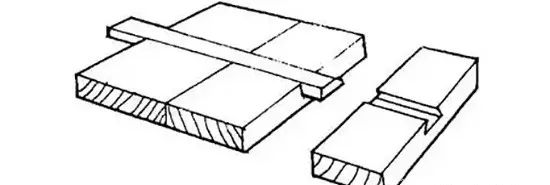
Most solid wood home furnishing enterprises adopt the form of flat joining in the joining process, especially for wood boards with relatively high hardness, such as black walnut, red oak, white oak, cherry wood, etc. The raw materials that adopt the flat joining method are simple to process, simple to apply glue, and simple joining and high production efficiency. As for the flat joining method, in addition to the traditional low-efficiency manual fixture cold joining method, most furniture factories still choose hot joining and mainly use high-frequency joining.
2. The Workflow Of Solid Wood Joining
2.1 Material selection
The work in the material selection stage greatly affects the quality of the finished panels after joining. The main purpose of material selection is to avoid some wood defects, such as knots, cracks, notches, excessive moisture content, etc. When selecting materials, it is also necessary to consider the technical requirements of the finished boards, whether the same color is required, even if different batches of the same tree species are used, the color of the solid wood strips may be different, and even the moisture content will be a very large deviation. As mentioned above, the deviation in moisture content between solid wood strips used for paneling should not exceed 2%.

2.2 Strips treatment
Strips treatment is to plan and straighten the wood strips before joining. This process is very important and is the primary guarantee of the quality of the boards after joining. It can make the jointed wood boards more stable and more beautiful. When processing the base material, pay attention to the following points:

First, the base material after sawing should be 2-3mm larger than the actual size of the finished board required, leaving a margin that can be used for sanding after the wood boards are jointed (for example, the finished board after sanding treatment required the thickness of the board is 25mm, and the thickness of the board before the board joining should be processed to 27-28mm). If JYC high-frequency wood joining machine is used, the thickness of the base material reserved for sanding can be lower to save more wood raw materials.
Second, it is necessary to keep the joints of solid wood strips, that is, the sides smooth, flat.
The width of the gap between wooden strips cannot exceed 1.5mm, and the warpage of the wooden strips must be controlled within 2-10mm.
The moisture content of all wooden strips is between 8% and 12%, and the deviation in moisture content between solid wood strips used for paneling should not exceed 2%.
Wood raw materials must not contain oil and must be degreased first.
2.3 Arrangement of wooden strips before joining
The arrangement of wooden strips has a great influence on the quality of finished furniture. Unreasonable arrangement of strips may cause serious deformation or even breakage of the jointed board and the finished furniture. At the stage of wooden strips arrangement, we should pay attention to the following points:

2.3.1 The arrangement of the wood texture should follow the principle of "head to head and tail to tail" as far as possible. The so-called head and tail of the board are the roots and tops of the tree;
2.3.2 Arrangement of color difference. Sometimes it is unavoidable to have color difference between plates. The arrangement is to try to put similar colors together so that the overall color changes gradually, that is, chromatic aberration arrangement. Some wood panel joining methods for the pursuit of special regular color difference display effects are not included in this list, but in this case, it is necessary to consider that the characteristics of the wood species of the wood panels should be relatively close.
2.3.3 Cut surface and earlywood and latewood: To consider the stability of the finished board, attention should be paid to the arrangement of the chord cut surface, radial cut surface, and earlywood and latewood of the jointed materials, and cross-matching should be adopted as much as possible. The earlywood and latewood here refer to the different hardness of the same tree species due to the difference in the external environment such as water intake and sunlight during the growth period and the felling period, and the hardness of the latewood is higher.
2.3.4 Ensure that the accuracy of the planed wood strips is ≤0.2mm, that is, the flatness of the glued surface of the solid wood strips should be high, and there is almost no gap between the two planks when they are glued;
2.4 Glue coating of wooden strips
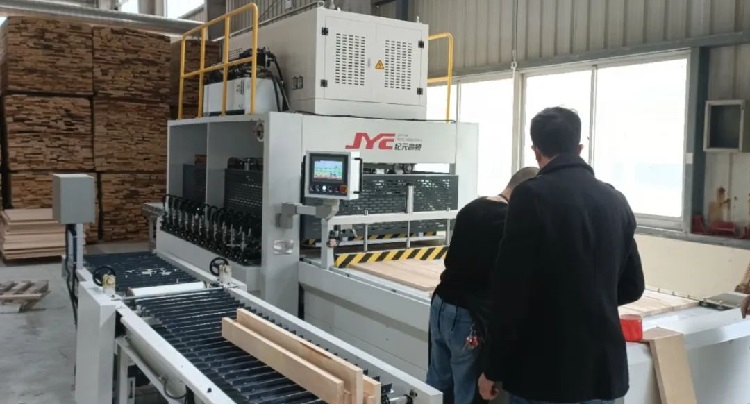
Apply the glue as evenly as possible to the joints of the boards, either manually or with a glue applicator, usually by brushing or rolling. Pay attention during the gluing process, the amount of glue applied on one side of the panel should be 180-220g/m², and it should be adjusted appropriately according to the board material, temperature, and use method, at least not less than 160g/m², and at most not higher than 240g/m² ;
2.5 Heating and pressing
After gluing, it is necessary to arrange the planks as soon as possible, and then start pressing. This link generally uses high-frequency joining equipment for heating and pressing.
JYC high-frequency joining machine series is suitable for the joining of various solid wood boards, and can also be used for the joining of technical wood and other wood panels for furniture manufacture and house decoration. It can also perform solid wood edge sealing for wooden doors and joining L-shaped door cover lines, etc.
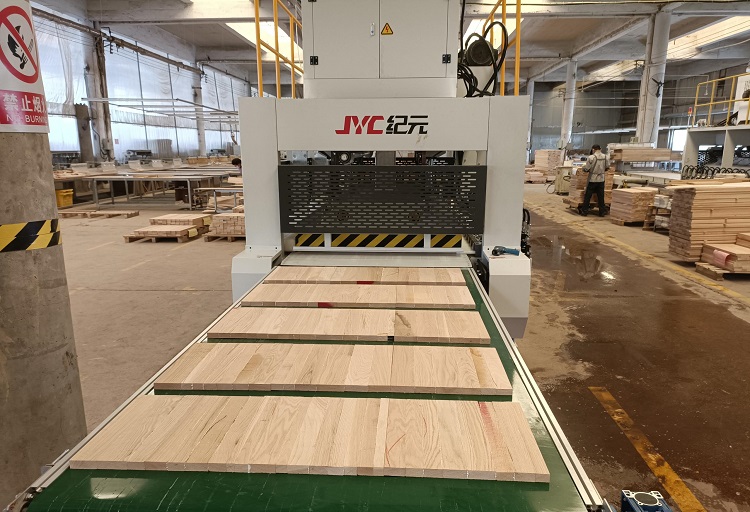
And they also have the following advantages:
2.5.1 One-button operation, fully automatic control;
2.5.2 The chain plate conveyor belt is used to feed the material, which is stable, and fast, and the slats arranged are not dislocation;
2.5.3 Support remote assistance, remote maintenance, and system upgrade;
2.5.4 According to different tree species and process requirements, JYC according to more than 30 years of professional experience, the processing parameters can be preset on the machine to improve material utilization and yield and improve the stability of finished boards.
2.6 Drying treatment after joining of board
After the wood boards are jointed, they need to be aired before they enter the next process, such as sanding, cutting, etc. If the airing time is not enough, it is easy to cause the glue line to crack and sink during the later processing.
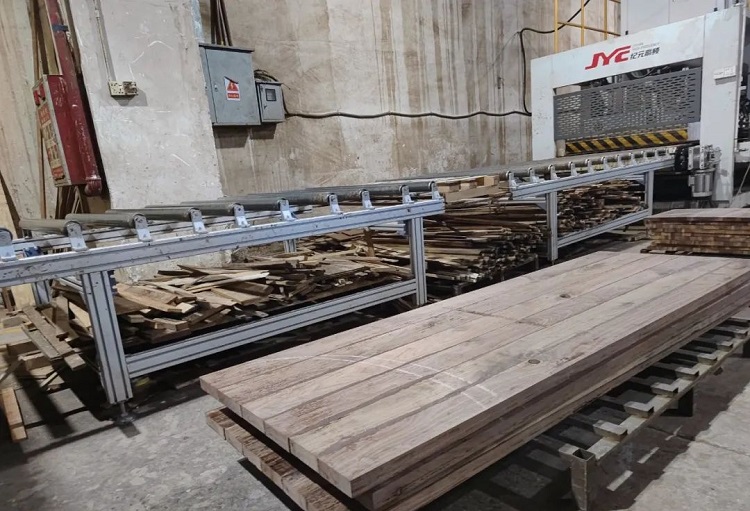
Generally speaking, the wooden boards jointed by conventional wood joining equipment should be placed for at least 24 hours before surface treatment. If the working environment humidity is between 35-65 and the temperature is between 6°C-25°C, The airing time after the wood strips are glued is more than 24 hours; if the temperature of the working environment is above 25°C, the curing time is about 12 hours. If the temperature of the working environment is higher and the air humidity is lower, or the boards are transported to the drying room for heat treatment after joining, the drying time can be shortened accordingly.
If you use the JYC high-frequency wood joining machine, its intelligent heating and pressurization methods, as well as "online pressure maintaining" airing operations, can greatly reduce the airing time after joining wood boards, most of the boards only need 1-3 hours of curing time to go directly to the next process.
3. JYC High-Frequency Automatic Panel Production Line
JYC's high-frequency automatic wood panel production line inherits the advantages of high-frequency joining machines such as "high flatness", "high efficiency", "wide applicability", "material saving", "manpower saving", etc., and is more efficient, stable, in terms of operability, substantial upgrades have been carried out:

3.1 Intelligent: The whole line realizes nearly unattended production mode, and automatically completes the entire production process of "feeding, glue supply, glue application, plank arrangement, high-frequency heating and pressing, discharging, and palletizing";
3.2 Glue saving: the automatic glue distribution and glue application system saves more than 20-30% glue than the traditional manual method;
3.3 Glue-free: the chain plate conveyor belt adopts nano-scale coating, and the table top is glue-free;
3.4 Labor saving: fully automatic joining line operation, low labor intensity, greatly improving production efficiency. Only one person is required to watch the production line, and it does not need to be a skilled worker.
3.5 wood material with unequal width: The self-developed whole-line operating system can realize the above-mentioned intelligent and automatic production process requirements for materials with equal or unequal width.
A large part of the business growth ability of a home furnishing brand depends on the sensory appeal of the product, and any brand can make customers trust, based on the "stability" of the product. You are more professional in opening up the market. JYC is more professional in high-frequency woodworking machinery. Welcome to contact us at any time.
